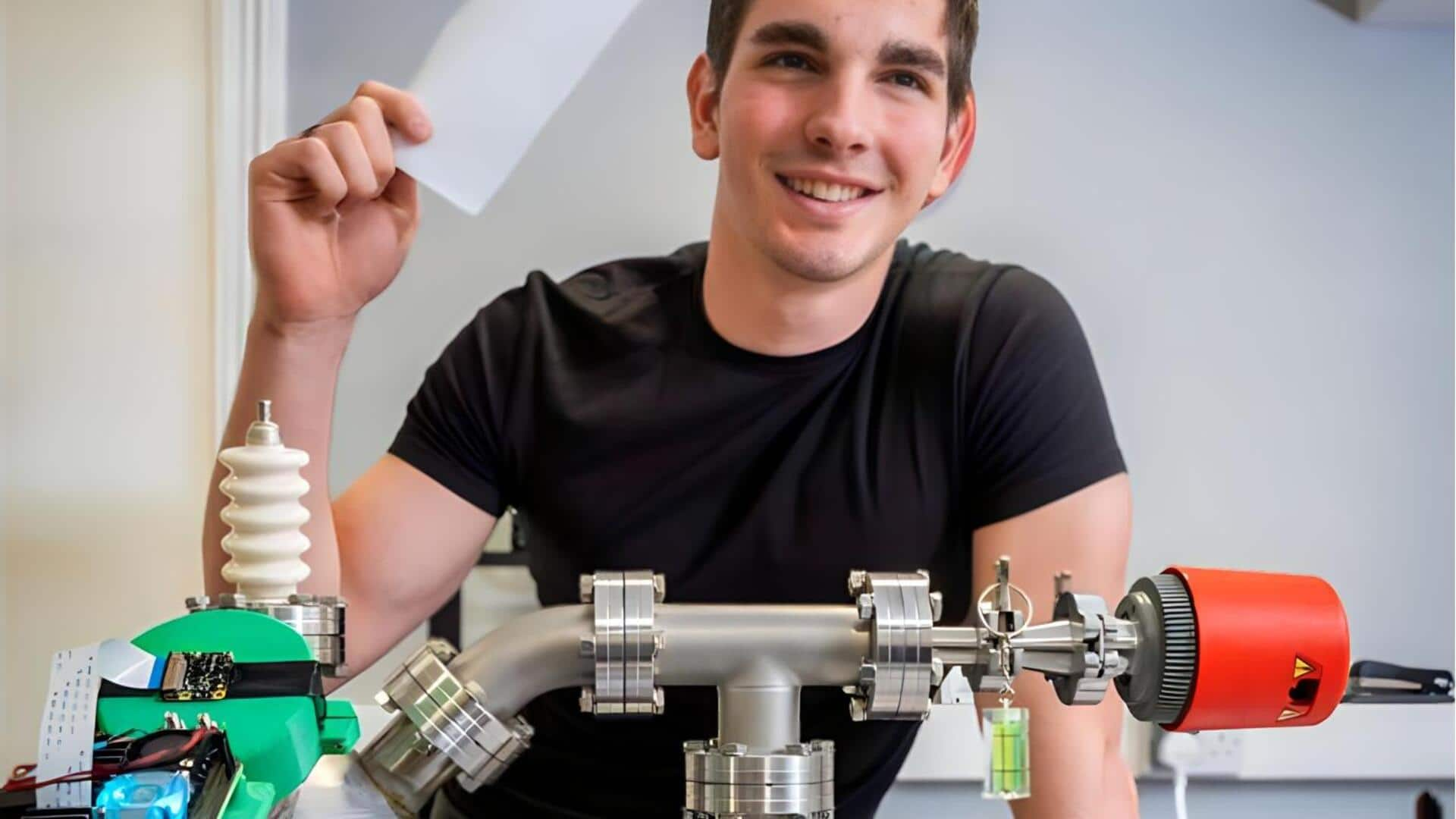
Teenager builds nuclear reactor for school project
What's the story
Cesare Mencarini, a 17-year-old Italian student in the UK, has successfully built a small nuclear fusion reactor as part of his Extended Project Qualification (EPQ) for A-Levels.
The reactor, designed to generate neutrons, is the first of its kind to be constructed in a school setting.
Mencarini's groundbreaking work was recently displayed at the Cambridge Science Festival and has already achieved plasma production.
Project duration
Mencarini's reactor: A product of 18 months of hard work
Mencarini dedicated 18 months to the development of his small reactor.
He explained that his reactor aimed to replicate the conditions necessary for nuclear fusion.
However, due to the inability to recreate the immense gravitational pressure found within the Sun, he opted for an alternative approach.
To achieve the necessary high temperatures to fuse atoms, the teenager employed high voltage electricity.
Mencarini wants to pursue an engineering degree and gain experience at the University of Bristol's Interface and Analysis Centre.
Project challenges
Mencarini's project faced initial skepticism
Mencarini faced initial skepticism from his teachers about the safety of his ambitious project.
"The college was initially concerned that this project, which I have also used for my EPQ, was dangerous," he said.
However, after conducting comprehensive risk assessments and receiving strong support from the staff, he was able to proceed with his innovative endeavor.
Future impact
Mencarini's reactor: A potential game-changer in energy industry
Dr. Julian Davies, the principal of Mencarini's college, described him as "outstanding" and predicted that he will significantly influence the energy industry in the future.
He also praised Mencarini's work ethic and dedication to his project. The reactor was showcased in Imperial College, Bristol, and Bangor universities.
Mencarini's LinkedIn profile says he has achieved 5 A*s in STEM subjects, the highest score possible in the UK.
He is passionate about engineering, particularly robotics, electrical, nuclear, computer, and aerospace.